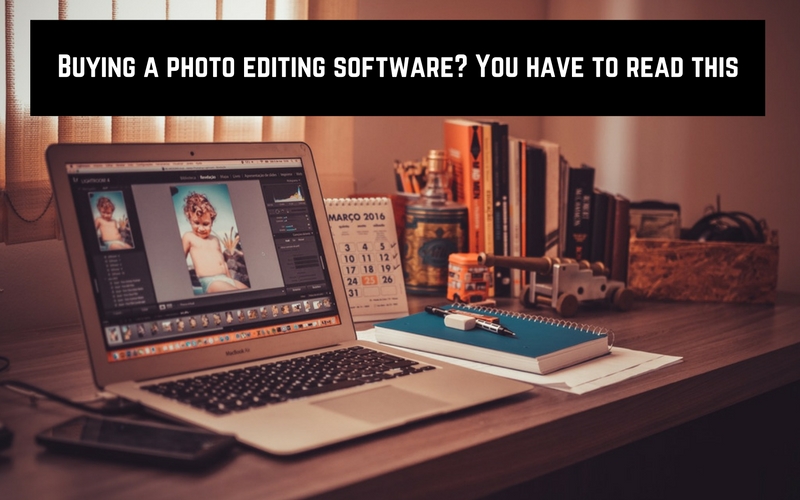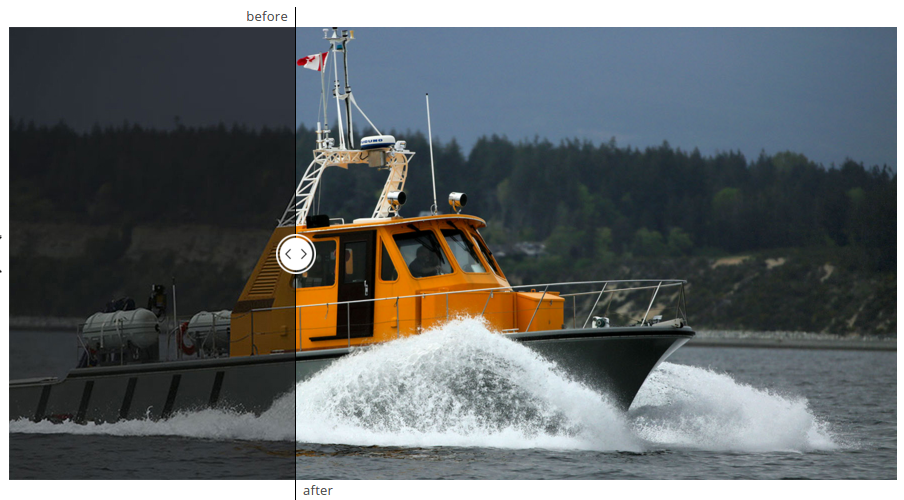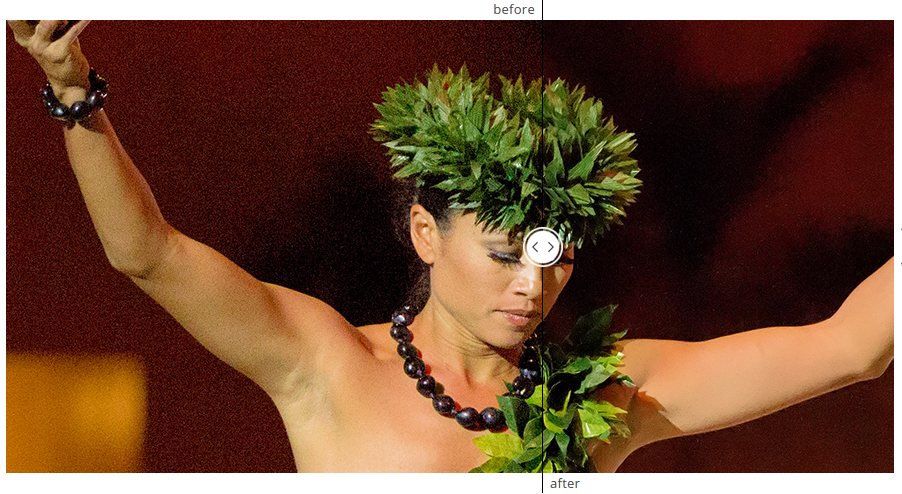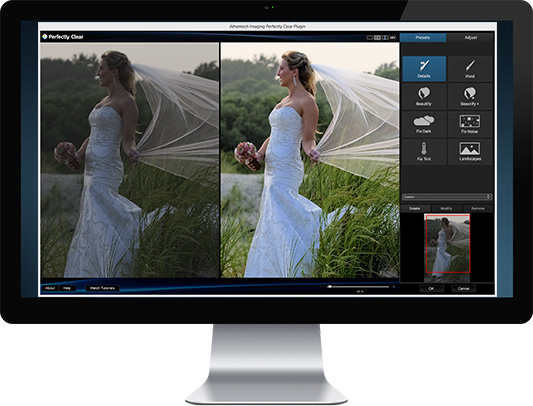Photo editing refers to the process of adding enhancements to a photo either by cropping, straightening, painting or noise reduction among others. Some forms of editing are done using hand brushes while the more advanced digital editing are best done using photo editing software.

What to consider when selecting a photo editing software?
In today’s digital age, we are provided with a range of photo editing software. Some of the software are free while most come at a price probably because of the value they are intended to add. There are online photo editing software which are fast and reliable. However, you should always look for certain specific qualities before choosing a photo editing software.
Here’re are some things you should consider before purchasing a photo editing software –
Price – The price of which ever
So, stick to what you want to use because there are many overly priced products available in the market with many other additional features, which have no real value for money for you.
Compatibility – The equipment which are at your disposal should be compatible with the photo editing software.

User experience – With an easy to understand user interface, any person can fully operate a photo editing software. It becomes easy to be quick and precise in using the many advanced features that may come with the software.
Time & Space – As a professional photographer, you have ample amount of photo editing tasks to be completed. Also, you have to keep a timely delivery of edited photos. So, you should go for a photo editing software which has the least processing time and has a batch processing functionality.
However, these are just the external factors that you should consider. There are more important things that take up the front foot when it comes to buying a photo editing software. These editing features are vital to most professionals. Such advanced editing features include layers, masks, text entry, selection options and tools.
Here’s a list out of 5 basic factors which are essential for any photo editing software –
1. Standard photo editing
All photo editing software should be capable of carrying out basic photo editing – Brightness adjustment, color balance and color depth, image cropping, etc. For a photo editing software to be considered useful, it is important to carry out these necessary edits with ease and with minimum errors.
The most important standard photo editing tools that are a must-have for any editing software comprise of the following:
- 8-bit image editing– An 8-bit image is the standard picture you can get from a digital camera. Your software should be able to edit these photos.
- Brightness– In many cases, you may get a slightly darker picture probably because of the ambient environment or weather. A standard photo editing software should have the capacity to increase the brightness of an image of to make it dark to some degree as desired.
Photo Credit: Athentech’s Perfectly Clear Plugins 2.0
- Color balance and color depth– Correcting the colors of a picture so that the most neutral colors are most pronounced should be achievable with any photo editing software. Color depth helps you to adjust the range of a color in an image
- Contrast– Contrast determines the level of difference between the dark and bright color elements of a photo. So, achieving a good balance, in contrast, gives you a sharper and more prominent image.
- Cropping– The possibility to trim an image to a specific size while maintaining the most required details is well satisfied by the cropping tool.
- Flip– It enables the photo editor to invert a photo either vertically or horizontally.
Besides the standard editing tools mentioned above, a photo editing software should have among other the following essential features – resize, rotate, shapes, undo, white balance, picture frame and red eye removal.
2. Advanced Editing Features
- Reshaping, manipulation and resizing – These tools are best used to enhance, reduce or enlarge photos. Images can be cut predefined or custom formatted to mark and measure a picture content
- Add grain or noise – This helps you simulate noise and film-style grain in digital photos
Color editing tools – These include color correction, color transfer, color zones and vibrancy. Black and white conversion which convert a color photo into a black-and-white image.
- Blend – Help in blending of different areas of a picture together
- Blur – Blurring helps the editor to soften the most visible details of an image.
The other advanced editing features include – color management, color to grayscale, color adjustment tools, collage, distortion, exposure adjustment, filters, mosaic imaging, image correction, image zooming, masks, post processing effects, retouch brush, saturation and warm, sepia enhancement, templates, text effects, transformations and watermarks among others.
 3. Digital Painting
3. Digital Painting
Any photo editing program must be well equipped with digital painting tools which allow the photo editor to apply several techniques in painting a photo. Conventional painting tools available in most editors include pencils and brushes. For professionals who invest a lot of effort in post-production, digital painting is a fundamental must have for their photo editors. There are many digital painting features, but below is a list of those tools which I consider very important.
- Color mixer– Allows the photo editor to mix colors and save them for use later on.
- Drawing models– A photo editing software with this tool as part of its digital painting features will allow you to get into different drawing modes.
- Custom brush– You would probably want an editing program that lets you change your brush. Options for your brush will include size, shape, and type.
- Layer blending options– Changing how different layers of a digital image blend with one another
- Mix brush– Lets you have several colors on one brush
- Paper choice– You should have the option to select the paper options for the drawing you want to make.
The other standard digital painting features which may prove valuable include shapes, tools, pencils, pen tablet connection and flood fill options.
4. Learning materials
A photo editing software should have learning material that is focused on assisting the user to get to know more about the product and its working. If you want to see the efficiency and availability of learning materials provided by a manufacturer of a given photo editing software, then you should take a look at the user guides, tutorials, help articles, question and answer sections and video tutorials if the company offers any.
For consumer-level photo editors, learning material is crucial because a lot of time is spent in studying and learning the software. In addition to the previously mentioned learning materials, Webinars should be available to help the user understand the software better.
5. Publishing
There are various methods of output which the software is capable of. These are collectively known as publishing tools. As a result of the numerous photo editing products, it has become easy and manageable to create DVDs, CDs, and books. You can generate print images as well as web galleries.
As a professional, you would cherish to publish your digital works in different formats, and the following are among the publishing tools that a photo editing software should be capable of:
- CDs and DVDs
- Books
- Cloud Storage
- Preview- the software should make it possible for you as an editor to preview your photo before deciding which format you want to publish them in.
- Printing
- Sending via email
- Saving as screensaver
- Slideshows
- And in form of web galleries
Here’s a list out of auto photo correction software –
Some of the software provide auto photo correction. They have an algorithm that automatically detects the discrepancies and assigns whichever tool is necessary for the auto photo correction.
There are numerous photo editing tools and plugins. They provide specific solutions to photographing defects. These plugins are available online for free or you can get them via paid sources. The following are some of the five most useful photo editing tools.
1. Athentech Perfectly Clear Plugin –
This photo editing plugin has benefitted a lot of photo editors. There are a number of reasons as to why Athentech’s perfectly clear plugin is ideal for your editing tasks https://photowhoa.com/deals/perfectly-clear-plugin/
It offers a broad range of 40 presets with different effects for your photos. It also provides three skin smoothing methods, dark circles removal, and full plugin support. You can buy Athetech’s Perfectly Clear at a pocket-friendly price of just $ 99.
Check out more about Athetech’s Perfectly Clear in this video –
2. BeFunky
BeFunky is an online photo editor that provides online photo enhancements. It offers hundreds of photo editing effects which you can use for image enhancements. Cartoonizer®, pop art and oil painting are among these effects.
With BeFunky online photo editor, you save hours of photo editing time. There is easiness in carrying out the toughest edits, and it is a powerful mobile photo editor.
Check out how to use BeFunky –
3. Pixlr – High-end photo editor. It is available in two formats, as Editor which is essential for the detailed image enhancement and as Express, which is ideal for application of quick fixes to images. The online editor has a dark and clean interface and is efficient when using low processor machines. It has essential features such as filters and supports layers, masks and fullscreen mode.
4. Athentech Free Perfect Exposure plugin –
Photographers love Athetech for its amazing plugins. Its photo editing plugins which work well with Photoshop and other photo editing programs have always had satisfactory answers. They recently released the Perfect Exposure plugin and to the plight of its users this product was absolutely free.
Perfect exposure plugin fixes exposure problems. It adds depth, contrast and soft light to image scenes with the help of 8 amazing presets which target various exposure issues.
With this plugin you can add light to even the darkest photos. The other issues handled by perfect exposure plugin include automatic exposure, diffused light, vivid color and adding great depth. This plugin supports photo editing programs such as Photoshop, Corel Paintshop Pro, Lightroom and Photoshop Elements.
5. Adobe Photography Plan –
Although, I have listed Adobe Photo editing tools at the last, they are the ones which most photographers prefer. You usually have to take a subscription for Adobe Photo Editing tools for using it. There is no free version available for test. You can get Lightroom and Photoshop for just $ 9.99 monthly.
I’d personally recommend you to take both the programs as Photoshop alone doesn’t suffice the editing needs. However, it is much more efficient for masks, layers, retouching, and multi-step image processing. Lightroom helps in blending catalog database for the images with Adobe camera editing tools. This is done with a slicker interface.
There are many free photo editing software, but you should be careful not to choose them at random assuming they all provide the desired results.









very interesting post, i actually enjoyed this web site, carry on it